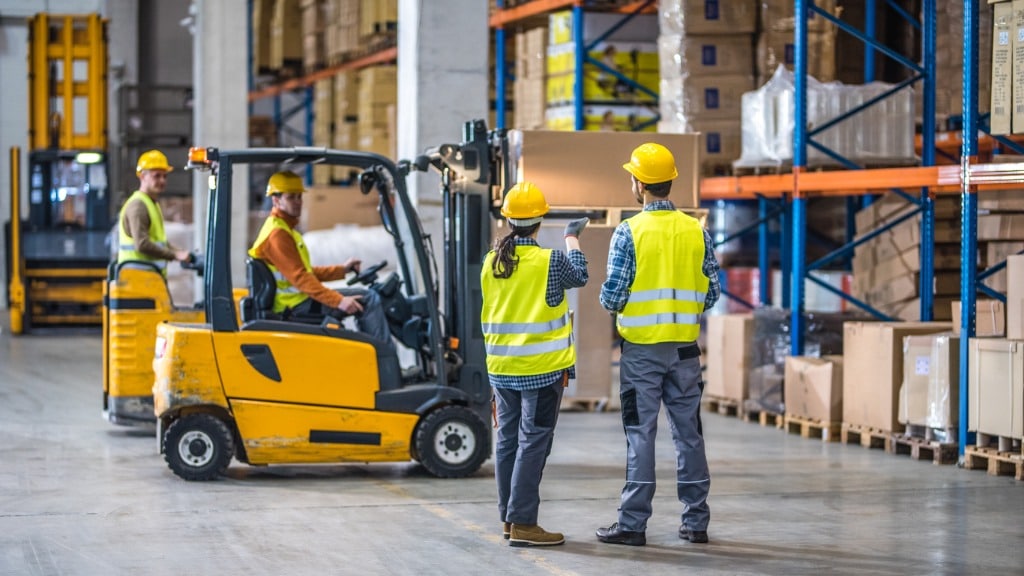Injuries and fatalities occur more frequently in the warehousing industry than in any other industry. This is why the Occupational Safety and Health Administration (OSHA) has implemented a set of safety standards that have to be followed by warehouse owners.
It is crucial that you follow these guidelines not only to keep your warehouse from being shut down by OSHA but to ensure the general safety of you and your employees.
What Is OSHA and Why Is Compliance Important?
With the passing of the Occupational Safety and Health Act of 1970, OSHA was created to develop and implement a set of safety standards to provide instruction, outreach, education, and assistance to ensure safe and healthy working conditions for working men and women.
OSHA’s primary goal is to avoid accidents, illnesses, and deaths in the workplace. Since the implementation of the Occupational Safety and Health Act of 1970, occupational deaths have been cut by roughly 62 percent, and accidents have reduced by nearly 42 percent.
Aside from it being a legal requirement to comply with OSHA Warehouse Safety Standards, there are several reasons why warehouse safety and employee well-being should be the number one priority for employers.
Whether it be because of fatigue or an accident involving heavy machinery, improper safety standards can be costly for your business.
Additionally, workplace accidents can significantly waste your business’s time and productivity, as parts of the warehouse can be shut down due to improper safety protocols.
OSHA compliance is essential for all warehouses to remain operable. Let’s take a look at a few tips to help your organization adhere to OSHA Warehouse Safety Standards.
Tips to Help Your Warehouse Remain OSHA Compliant
These tips will not only help your organization and employees avoid potential hazards, but they will also help create an environment for your employees to work safely, productively, and efficiently.
1. Keep Your Warehouse Clean and Organized
Seeing as how a significant portion of warehouse accidents result from slips, trips, and falls, accidents are waiting to happen in chaotic and cluttered warehouses.
Keeping floors clean, cleaning spills quickly, and collecting garbage regularly goes a long way towards improving your warehouse workers‘ safety.
2. Use Effective Signage
Make sure you have effective signage conveniently located throughout your warehouse.
Whether it’s for hazard recognition or to endorse safety initiatives (such as first aid training or equipment service safety), effective signage can help differentiate high-risk areas and prevent accidents from occurring.
You might also want to consider setting clear pathways for pedestrians and vehicles to build a traffic flow system around the warehouse.
3. Implement an Employee Dress Code
Dress codes provide a high level of professionalism and can help create camaraderie among your employees.
Professional clothing also provides a powerful message to clients, regulators, and investors that you are well prepared and operate a secure and well-managed warehouse. This is also an opportunity to do away with articles of clothing that may prove to be safety hazards.
4. Encourage Hazard Communicate with Warehouse Staff
Effective communication is a function of any successful organization. This not only includes being able to talk to your employees but being a good listener as well.
Be sure to listen to any concerns your workers have, spend time listening to what they think, and ask for their opinion regarding their safety while on the job.
5. Implement Shelving and Racking Safety
Another serious safety risk in the workplace is improper shelving and racking. Inadequate shelving and racking can be extremely dangerous, whether it’s old and broken or just improperly used.
Ensure that your workers are well qualified to disperse weight around a shelf, determine how much weight a given rack can handle, and how to stack boxes for efficiency.
Installing well-designed, secure, and sturdy industrial shelving systems can help reduce the risk of shelving and racking-related accidents in the workplace.
6. Properly Train Your Staff in all Safety Procedures
The time and money you spend on training and educating your staff on safety procedures within the workplace will have the greatest return on investment you will ever get.
When training your staff, be sure to demonstrate procedures to your workers, test them to ensure they understand warehouse safety standards and policies, and provide guidance where necessary.
7. Ensure Safe Operation of Facility Vehicles and Equipment
When it comes to employees operating vehicles within the workplace, ensure that the ones who are doing so are properly trained and make sure to enforce strict safety protocols.
Additionally, be sure to keep each vehicle in compliance with the guidelines of the manufacturers. If an employee is found to be misusing company vehicles or equipment, adhere to a strict disciplinary procedure.
This is especially important for forklift operation. Around 100 people are killed and 95,000 people are injured each year as a result of forklift-related accidents. Only specially-trained employees should operate forklifts.
8. Improve Ergonomics for Workers
Human error, typically attributed to a physical or mental lack of preparation or exhaustion, is responsible for most warehouse accidents.
Therefore, you should also ensure that workers take ample breaks, not work too long, and consider additional safety measures to prevent workers from becoming too physically exhausted while on the job.
Additionally, depending on the job, ensure that each employee has the necessary personal protective equipment (PPE) to fulfill their job duties safely.
9. Use Training Refreshers
Lastly, over time, safety standards can be overlooked even by workers who have been working in your facility for a long time. Therefore, training and safety procedures should be revisited regularly. Be sure to mandate training and safety refresher courses for all your employees.
Contact BILT Industries Today
Creating a safe and efficient warehouse environment starts with a safety plan that is enforced by managers at all levels. We hope this article has helped shed some light on the importance of adhering to OSHA’s Warehouse Safety Standards.
At BILT Industries, our mission is to build personal relationships with our customers to help them maintain high-quality standards within the workplace.
We have years of experience complying with OSHA Warehouse Safety and offer several state-of-the-art industrial shelving systems to help improve material handling and storage within your warehouse.

